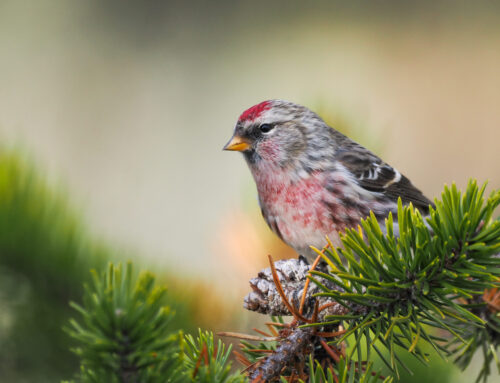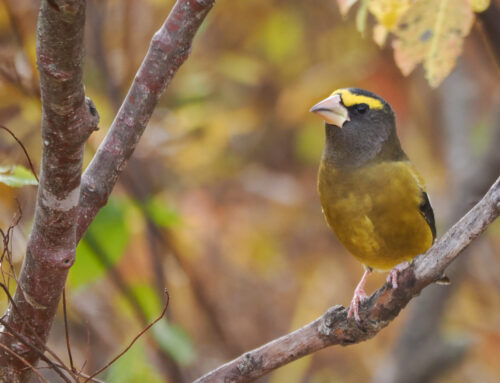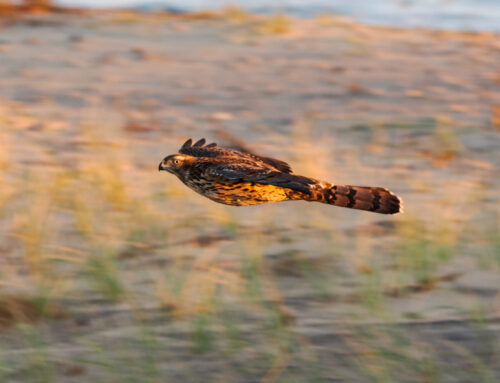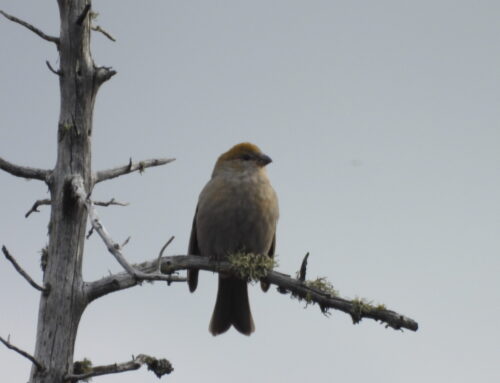Piping Plover monitoring at WPBO has ushered in a change of pace for me: though I work just a few hundred yards from my old station at the waterbird shack, I now spend a good portion of my time intently looking at just two birds when, before, I spent my time intently looking for all birds. So, without further ado, a formal introduction of these two birds is probably warranted: the male component of our 2020 Piping Plovers-in-residence, identified by his thick black neckband and bolder eyebrow, is Of, V/OO:X,O.

WPBO’s male Piping Plover, “the Zombie Chick.” Alison Vilag photo.
Color banding is a common technique used by bird researchers. It makes possible ready identification of individual birds, and is a great means of gaining insight about their movements: anyone, with a good enough look (or photo) can decipher the combination. This is much easier than trying to get a bead on the metal USFWS band numbers.
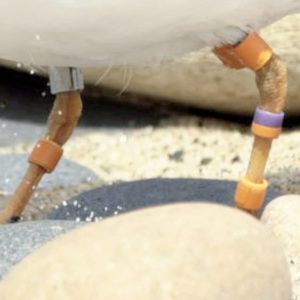
WPBO’s male Piping Plover’s color bands. His orange flag and split-color band mark him as a captive-reared chick. Alison Vilag photo.
Color bands are read top-to-bottom, left leg to right leg. Some of the decoding is intuitive, but for the less overt parts of our male plover’s bands, “f” refers to his “flag” band,” “x” is his metal number band, and “/” demarcates the colors on his split-color band. The colon (“:”) separates the left and right legs, and the commas separate the upper leg and lower leg bands. For those curious, here is a link with information pertinent to Great Lakes Piping Plover color banding.
So now that you’ve gotten a crash course in reading these color bands, let’s learn a little more about WPBO’s nesting plovers! The male’s band combination tells us this bird originated from a Sleeping Bear Dunes area nest. (The highest concentration of Great Lakes Piping Plovers nest in the Sleeping Bear area.) This particular plover is, in fact, a bit of a celebrity in the Great Lakes Piping Plover sphere: he’s known as the Zombie Chick, and came from an abandoned nest on North Manitou Island in 2019. The eggs from this nest were thought to be beyond salvage, but after a few days in the incubator, the one housing the Zombie Chick showed signs of life! He was raised, released at Whitefish Point in July 2019, and recorded from the Georgia coast last winter. He is a great testament to the Great Lakes Piping Plover captive-rearing program, and I think it’s super neat that he’s come back to WPBO to nest.
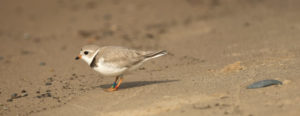
WPBO’s female Piping Plover, hatched in 2018 in Grand Marais, MI. Alison Vilag photo.
The female bird, (X,R:Of,BG), was hatched in 2018 on a Grand Marais, Mich., beach. Note her browner neckband and less-marked face. She and the male share their incubation duties quite equally, and typically switch out every hour or so — sometimes a little more, sometimes a little less. Other Piping Plovers do visit WPBO. From the vantage of the waterbird count, where it is impossible to see a complete band combo, I always assumed we were dealing with the same few plovers. Well — I was wrong. Really wrong. Since I started monitoring on June 6, I have observed seven different Piping Plovers here! Our nesting female plover is no fan of these new birds and chases them all away. Our male enthusiastically chases the males, but he prefers to court the new females — and sometimes even leaves his incubation duties for short periods to do so. Piping Plovers are most often monogamous; cheeky guy, this Zombie Chick…
Thank you, as always, for reading.
-Alison Vilag, WPBO Piping Plover Monitor and Outreach Specialist


